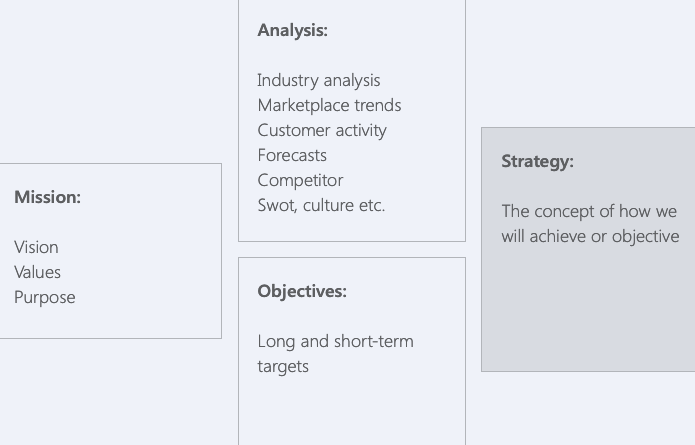Should I commission more strategy work from agencies?
Last year I commissioned agency strategy work to the tune of a little under a million pounds. With the advantage of hindsight, I have to ask myself
Are agencies who produce experience strategy really worth the money?
The first of the two strategy pieces was run by a really smart guy at a great agency but ultimately, the work they produced had little or no impact on our business.
It didn’t inform our decision-making nor did it transform any of our research and insights into actionable recommendations. Basically, and no offence to the bright folk who wrote the strategy documents, their work ended up as a couple of big fat Powerpoints on the S: drive. Those docs were briefly consulted then largely forgotten.
The second strategy piece cost twice as much as the first but achieved little more. The brief was to help us accelerate our performance improvements and we went to a leading consultancy in the hopes they would have significant positive impact on our company (or at least our trading performance).
Where the first project likely suffered from poor access to stakeholders, this second one involved a large team of folk in dark suits who made it their business to go as deep as they could and get the information they needed from the right stakeholders.
At first the results seemed encouraging, the team produced a number of documents with amazing facts and figures. Using what I must assume is voodoo and pixie dust, they were able to attach precise performance metrics to general user experience improvements (both UI and UX) and those percentages of ‘uplift’ (a new word I learned last year) were extremely useful in writing budgets and of course going to the board for cash.
To be fair, the key objective of this second consultancy piece was to generate supporting evidence such that the executive committee could approve a very large budget. Serious people and serious money, so I perfectly understand the need for large documents filled with precise facts and supporting appendices (“the details are all in the appendix” is another favourite bit of consultant-speak I learned last year).
Unfortunately, this strategy also had a fatal flaw. Because it was created top down, with no deeper or longer-term stakeholder engagement, it only took a small change of weather at the top for the budgets to be cut and the whole programme to be shelved.
Now if you ask me, that’s a lot of cash (and a lot of time) spent for not a lot of positive outcome. I’m actually looking at my own strategic thinking so I’m not (just) having a bitch and a moan. I am genuinely curious to get a feel for the sustainability of the customer experience strategy industry and learn from the mistakes I made last year so next time this happens we’ll get a better result.
Items 1, 2 and 4 in the diagram above make up what you might call the “strategy context” of the brief. I reckon this is where the first agency came a cropper.
Specifically, we didn’t tell them absolutely everything about the business and they had to make assumptions as to our likely performance. Their analysis was actually pretty clever but we hadn’t completely gelled our vision, values and purpose. This meant fragmented results and there was no way our organisational delivery was going to be able to cope with the agency recommendations.
I guess there’s a lesson here. If your customer hasn’t nailed vision/values nor indeed sufficiently clarified objectives, don’t go into strategic analysis. Maybe the brave thing to do is say “we love working with you but let’s revisit this in six months when your brand team has had a chance to clarify where you stand” (or words to that effect).
If strategic context was the downfall of the first project, team process was the problem with the second. The consultants were able to get a reasonably good fix on the strategic context (the brand had gelled more since the first team) but they worked to a time-frame that didn’t permit the embedding of the “organisational delivery” of their proposed strategy. Simply put, they didn’t get deep buy-in across layers of management.
I’m not sure what the answer is here but I’m guessing when one budgets one’s headcount on a strategy project, perhaps it would be worth spending a little extra on getting people on the ground to build deeper commitment to one’s strategy (could this compliment the usual idea of providing a deck as ‘armament’ for a director to then socialise in the business?)
Finally, I wonder how much work went into tailoring the work to a client-side audience. I found large parts of both agencies presentations and documentation to be very opaque. You can be as clever as you like but if you don’t stimulate your stakeholders to action you’re not really having any impact. Something to think about…
There are a hundred other lessons to learn here as well but I’m concerned with those that directly impact the client/agency relationship when dealing with strategy development.
Are you Director of Customer Experience Strategy in an agency? Comments on a post-card please:-)
In
Strategy
Transformation
(comments disabled)
